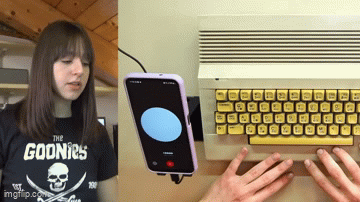AI joins forces with computer DIYer.
Electronics
Can AI Help Revive an Old Computer?Can AI Help Revive an Old Computer?
Watch this DIYer use ChatGPT to try to help her repair a non-working Commodore 64.
Sign up for the Design News Daily newsletter.

Watch this DIYer use ChatGPT to try to help her repair a non-working Commodore 64.